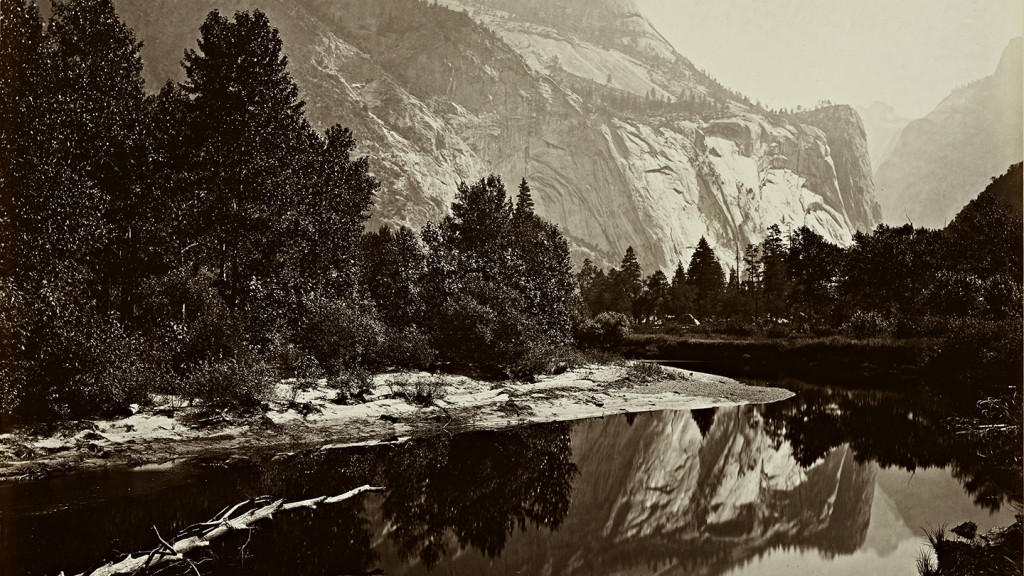 I recently read Wilderness and the American Mind, Roderick Frazier Nash‘s influential landmark survey of the intellectual history of wilderness in the U.S. In the Epilogue of the fourth edition, Nash muses on possible futures for wilderness and explains why the attitudes and rationales that led to the preservation of wilderness in the past may not hold up going forward.
I recently read Wilderness and the American Mind, Roderick Frazier Nash‘s influential landmark survey of the intellectual history of wilderness in the U.S. In the Epilogue of the fourth edition, Nash muses on possible futures for wilderness and explains why the attitudes and rationales that led to the preservation of wilderness in the past may not hold up going forward.
“Ecocentric” arguments for wilderness preservation, which are rooted in ethics—rather than aesthetics, politics, or economics—are becoming increasingly important. Such a shift in conversation necessitates an intellectual and moral transformation of attitudes about nature. This is something I’ve been thinking about for a while, and Nash’s ideas have stimulated me to further contemplate how music might support the ecocentric perspective.
The preservation of wilderness has been justified by benefits to humankind rather than the intrinsic values or rights of other life forms.
(It may be worth clarifying here that Nash is writing expressly about the preservation of “wild” nature—that is, ecosystems, flora, and fauna that are unmodified or uncontrolled by human hand—as understood in a post-Wilderness Act America. In this sense, arguments for environmental improvements such as city parks or renewable energy do not serve wilderness preservation and, Nash argues, are in some ways at odds with it.)
Nash describes how the people who envisioned the founding of Yellowstone, the first national park (established in 1872), wanted to protect the area for its scenery and natural “wonders.” These men essentially saw the land as a naturally-formed work of art whose highest purpose would be to serve the inspiration and entertainment of tourists. This view has persisted in many ways, but was subsequently joined by other anthropocentric rationales for preservation that have held varying degrees of weight in different situations.
These rationales have included the physical, spiritual, and psychological benefits of nature experiences for an overworked, over-civilized, urban society; the economic benefits of nature tourism (which, in many cases, outweigh the benefits of alternative uses of the land and animals); and the nationalist view of the “wilderness experience” as part and parcel of American heritage and national character, which future generations have a right to experience for themselves.

America bison. Source: Wikimedia commons.
The “ecocentric rationale” for preserving wilderness, Nash explains, gained prominence during the 1980s and 1990s. This view, introduced into American thought during the 19th and earlier 20th century by Henry David Thoreau, John Muir, and Aldo Leopold, argues that non-human life forms have an inherent right to exist and prosper. (This brings to mind one of my favorite idiosyncratic-yet-profound quotes from Muir, in reference to poison oak: “Like most other things not apparently useful to man, it has few friends, and the blind question, “Why was it made?” goes on and on with never a guess that first of all it might have been made for itself.” From My First Summer in the Sierra.)
The existence of wilderness is valuable not only in itself, Nash argues, but also to trigger a much-needed change of perspective: “Wilderness can be an intellectual and a biological starting point for putting human needs into ecological balance with those of our fellow travelers on spaceship Earth” (p. 389). Accordingly, Nash notes that, with the emergence of “environmental ethics” at the end of the 20th century, “there was a growing realization that of all the forms of pollution, that of the mind was the most serious. Correcting it meant changing values and attitudes, and wilderness was of major help here not only ecologically but intellectually as well” (p. 390).
Perhaps new kinds of artistic interpretation of wild landscapes today can encourage new kinds of actions.

Carleton Watkins, Mirror View of the North Dome, Yosemite, 1865-66
As I’ve noted before, art is itself an expression of human perspectives on the world and may be inescapably, inherently, anthropocentric. However, if what is most needed is to change minds about the rights of nature—which, Nash proposes, is the conclusion of environmental ethics—then art may act as an aid and amplifier for what wilderness has to tell us.
For more musings on how art might impact humanity’s views of nature, read why Landscape Music is more important than ever.
